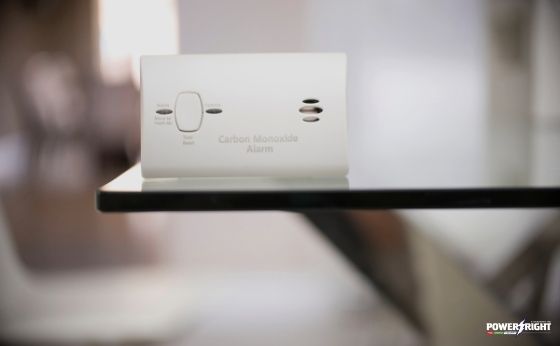
Carbon monoxide or CO is an odourless and colourless flammable gas, a byproduct of combustion. It is toxic for people and animals and can cause poisoning. What is more, it is one of the major causes of poisoning deaths in the world.
The best way to protect yourself, your family members, guests or employees from carbon monoxide leak is to install a reliable CO alarm.
It is a device that alerts you whenever it detects a buildup of carbon monoxide in your home or business property. A CO detector will let you know of the danger before you start feeling symptoms.
Everybody who has at least one fuel-burning (oil, wood, gas) boiler or appliance, fireplace or attached garage. Whether at home or in the office, you want to feel safe and provide a secure and riskless environment for your people around you.
It is worth doing a little research before purchasing a CO alarm. To obtain a device that will not let you down, pay attention to these most important features:
There are four CO detecting sensors:
Biomimetic. It uses colour-changing liquids or gel-like elements to detect CO. Such sensors last only up to three years.
Metal oxide semiconductor. This sensor is using wired circuits to check carbon monoxide levels. Most alarms utilizing this sensor last up to ten years.
Electrochemical. This sensor is believed to be the best-in-class offer as it provides the most protection for homes when detecting CO gas. Electrochemical CO sensors generate currents showing the amount of CO detected. Such alarms work best in most home temperatures. They have a long life span.
Optochemical. It is the most cost-effective sensor. It can only determine if the poisonous gas is present or not. Even though CO alarms with this sensor are affordable, they may offer limited protection as they do not determine the carbon monoxide levels.
There is a battery, wired, or plug-in connection for most CO alarms. Your choice will depend on what is most helpful and convenient for you.
A wired type provides consistent energy without battery replacement. However, in case of a power outage, it stops working. That is why any wired device should feature battery back-up.
A battery-operated unit provides power during an outage and is easier to install.
Plug-in CO detectors are as well easy to install. The disadvantage of this type is its standard placement (the placement of electrical outlets). It becomes difficult to detect CO effectively as gases rise.
Purchasing a CO alarm with a digital display makes it convenient to track carbon monoxide levels in your home. Some models even feature a timeline history of your home carbon monoxide concentration, which can help assess or identify risks. If dangerous levels of carbon monoxide are above 101 parts per million, the siren, voice or phone notification will alert you. Then you can take precautions against the potentially fatal consequences.
Nowadays, there are plenty of CO detection devices with dual-sensing capabilities. These alarms can identify more than one hazardous element on your premises. Such devices usually have specific notifications, so you will understand which problem needs to be addressed.
Here are several most popular models in this field with their advantages and disadvantages explained:
Google Nest Protect
Nest Protect detector combines state-of-the-art smoke and carbon monoxide sensors. It works with an app that allows you to get alerts or silence alarms if necessary. This alarm is considered one of the best for renters or homeowners
Pros
Cons
Onelink is a smart smoke and carbon monoxide detector. These alarms use your Wi-Fi to communicate to other alarms and alert you in case of fire or gas leak. It is possible to control it from your Apple device with an app.
Pros
Cons
When the built-in battery dies, you will have to replace the whole thing. Even though the battery lifetime said to be ten years, this CO unit is more expensive, so not every person would agree to pay this price for a replacement.
The Alert Plus alarm is a simple affordable device that can only detect carbon monoxide. It also shows CO levels on an easy-to-read digital display.
Even though it doesn’t have any smart features, it still can speak to you in voice when there’s danger. Most people find a traditional siren more stressful than a loud voice alarm. With this basic unit, you will still have a choice.
Pros
Cons
Kidde Battery-Operated Alarm
This device offers continuous CO monitoring by checking the air every fifteen seconds with its electrochemical sensor. It features a powerful siren and green and red lights to alert people with hearing loss. As this alarm is battery-operated, it will work even during a power outage.
Pros
Cons
To avoid CO poisoning and save lives, it is crucial to vent fuel-burning appliances (water heaters, furnaces, ovens etc.) and refrain from leaving your car running in the garage. What’s more, you should install a decent carbon monoxide alarm, even if your property is supplied only with electricity, as there are still some risks.
Depending on your situation and budget restrictions, you may choose to buy a more expensive alarm, including a smoke sensor and smart features or a more affordable, easy-to-install option.
In any case, we recommend checking its sensor type, power source and if it has a digital screen and smoke sensor included.